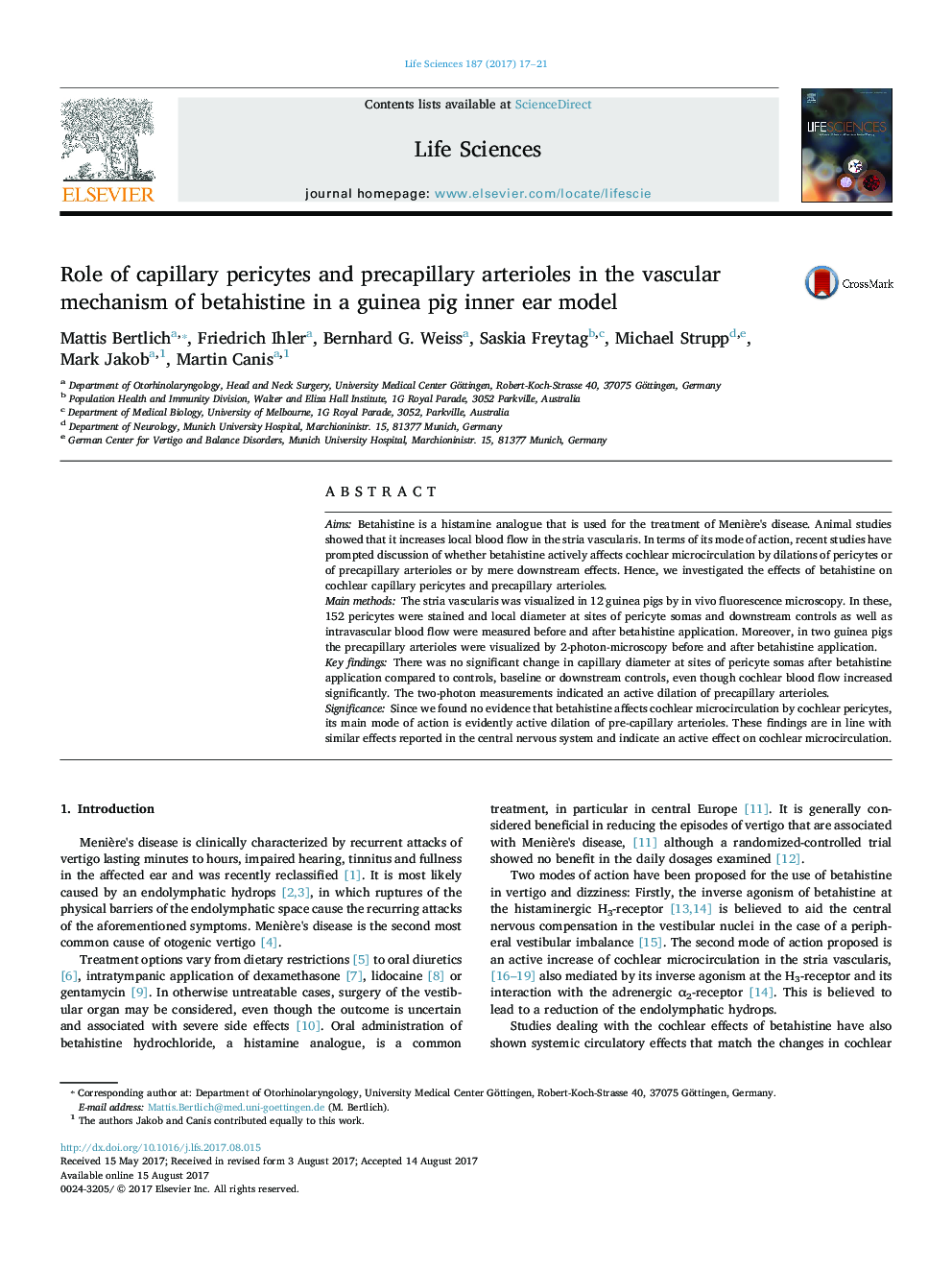| Article ID | Journal | Published Year | Pages | File Type |
|---|---|---|---|---|
| 5556808 | Life Sciences | 2017 | 5 Pages |
AimsBetahistine is a histamine analogue that is used for the treatment of Menière's disease. Animal studies showed that it increases local blood flow in the stria vascularis. In terms of its mode of action, recent studies have prompted discussion of whether betahistine actively affects cochlear microcirculation by dilations of pericytes or of precapillary arterioles or by mere downstream effects. Hence, we investigated the effects of betahistine on cochlear capillary pericytes and precapillary arterioles.Main methodsThe stria vascularis was visualized in 12 guinea pigs by in vivo fluorescence microscopy. In these, 152 pericytes were stained and local diameter at sites of pericyte somas and downstream controls as well as intravascular blood flow were measured before and after betahistine application. Moreover, in two guinea pigs the precapillary arterioles were visualized by 2-photon-microscopy before and after betahistine application.Key findingsThere was no significant change in capillary diameter at sites of pericyte somas after betahistine application compared to controls, baseline or downstream controls, even though cochlear blood flow increased significantly. The two-photon measurements indicated an active dilation of precapillary arterioles.SignificanceSince we found no evidence that betahistine affects cochlear microcirculation by cochlear pericytes, its main mode of action is evidently active dilation of pre-capillary arterioles. These findings are in line with similar effects reported in the central nervous system and indicate an active effect on cochlear microcirculation.
